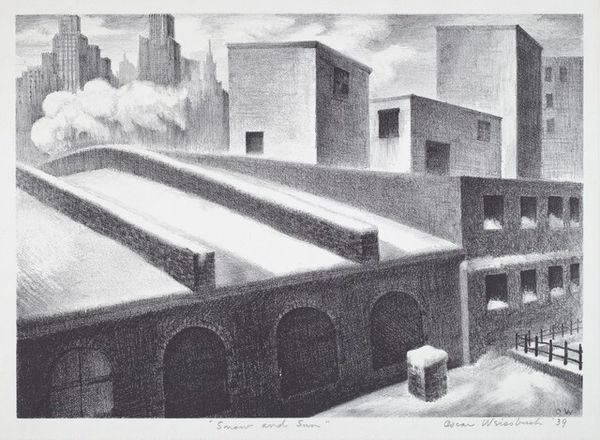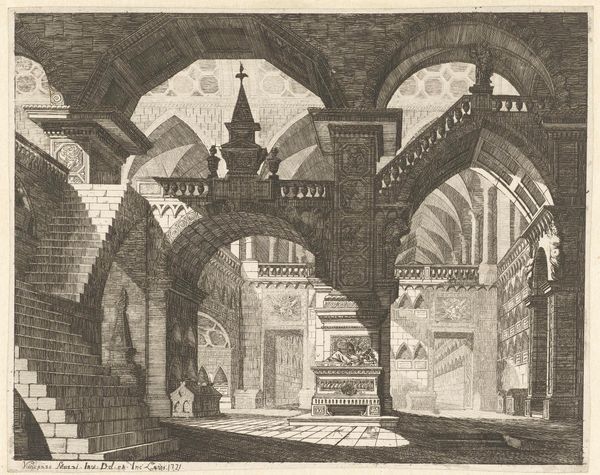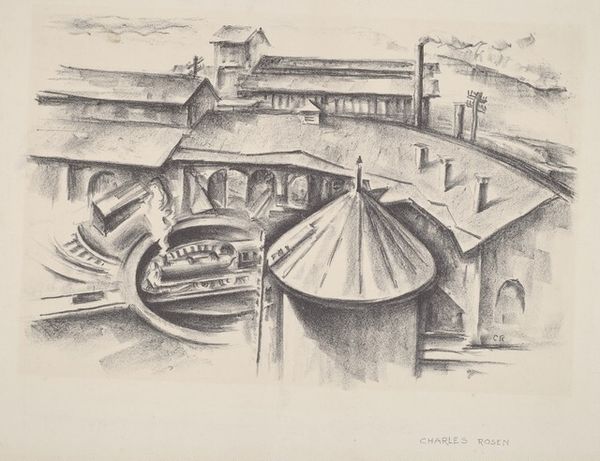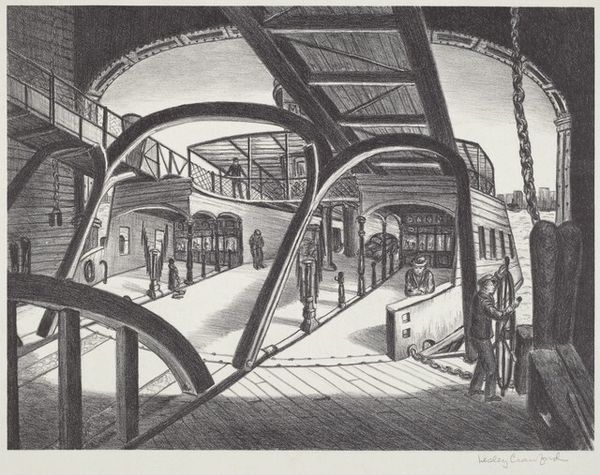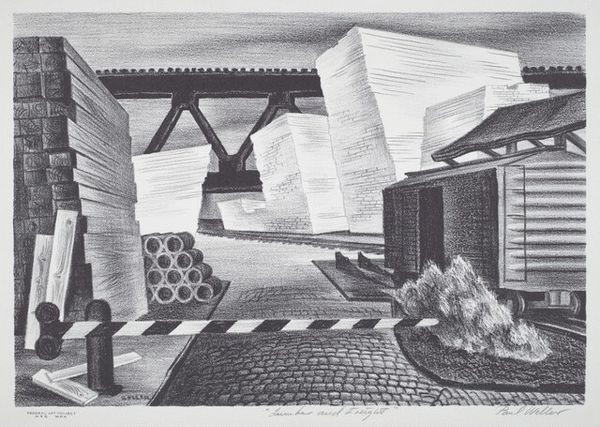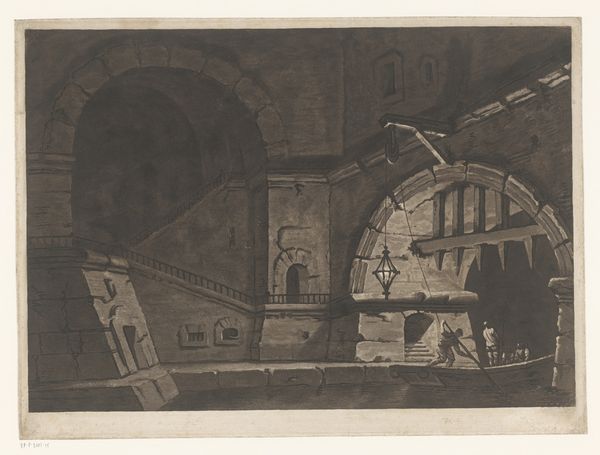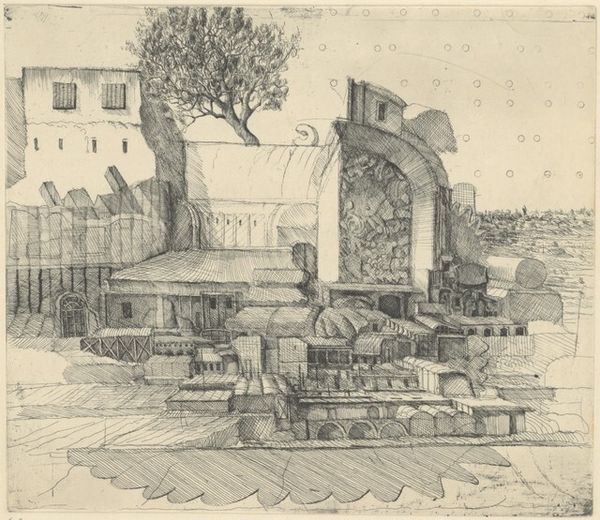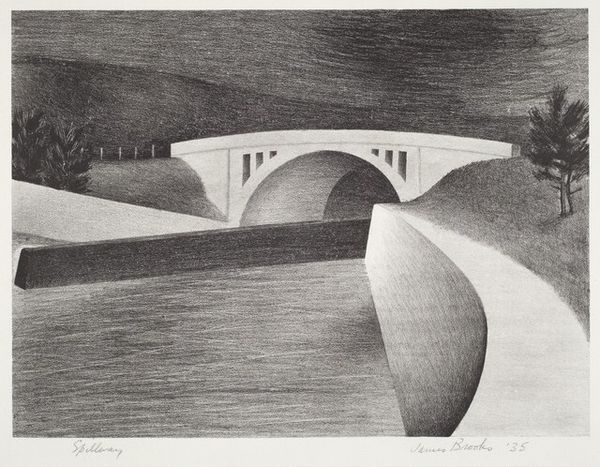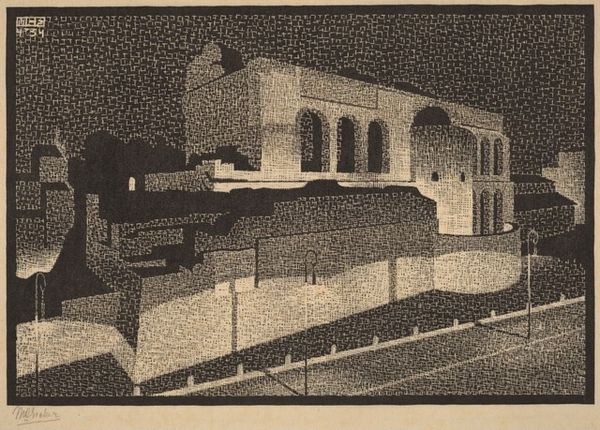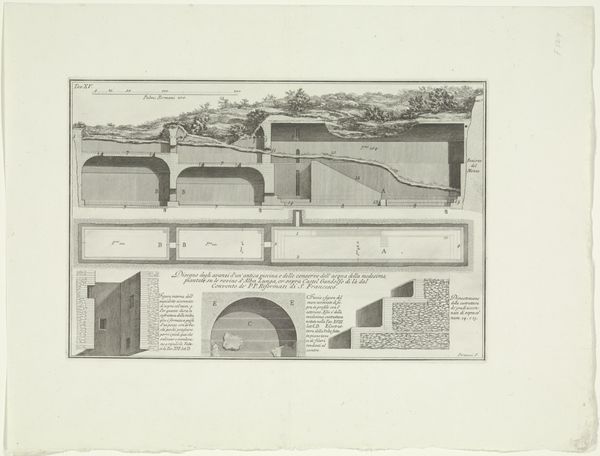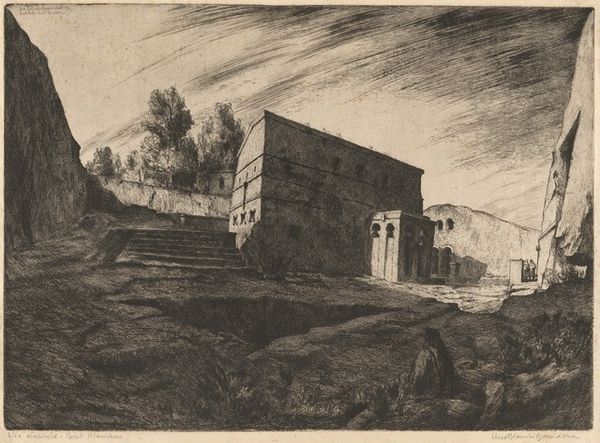
print, graphite
#
precisionism
#
pencil drawn
# print
#
pencil sketch
#
form
#
pencil drawing
#
line
#
graphite
#
cityscape
#
realism
Dimensions: image: 235 x 337 mm paper: 279 x 406 mm
Copyright: National Gallery of Art: CC0 1.0
Curator: We're looking at Stefan Hirsch's "Untitled (Bush Terminal)," created in 1929. It's a print, rendered in graphite, showcasing a nighttime cityscape. Editor: There’s a stark, almost unsettling mood to this. The strong directional light and heavy shading give it a theatrical quality. A stage set before the curtain rises. Curator: Precisely. Hirsch's manipulation of light is quite deliberate, highlighting the architectural forms while simultaneously obscuring details. Note the repetitive use of arches and geometric volumes. He embraces form, highlighting the aesthetic qualities inherent within urban landscapes and stripping down any sentimental associations we might have. Editor: Those vintage automobiles lined up in the foreground suggest something about the emerging car culture, maybe its role in transforming urban space and contributing to a sense of alienated modernity? The image also points towards industrial capitalism and its emphasis on production and consumption, which impacted artistic and architectural choices. Curator: An excellent point! Hirsch seems invested in geometric abstraction typical of Precisionism. Consider the stark contrasts and how the rendering flattens planes while maintaining a sense of depth. Editor: That dramatic interplay of light and shadow is compelling; I would imagine that reflects the social and economic shifts occurring during the late 1920s, including debates over labor, industrial output, and wealth disparity, as artists negotiated the relationship between technological innovation and individual agency. It certainly emphasizes a kind of anonymity and depersonalization. Curator: The linearity evident in the architectural renderings adds a powerful sense of rhythm to the composition. I read in that a harmonious design sensibility. Editor: I concede that the image holds formal beauty but I still feel its latent social critique remains just as significant to interpretation as is the visual mastery that Hirsch brought to bear upon the piece. Curator: Fair enough. Ultimately, its strength resides in that tension: form and social function intertwined. Editor: Yes, exactly. It's a reminder of the complex forces at play during that time—a negotiation between industry, aesthetics, and cultural identity.
Comments
No comments
Be the first to comment and join the conversation on the ultimate creative platform.
